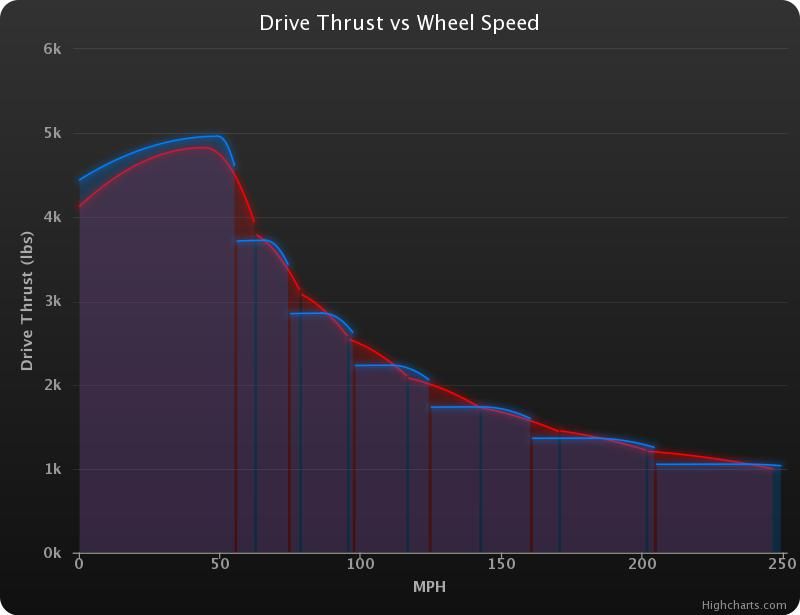PhillipM wrote:If the power is constant between the gears then so is the acceleration.
To elaborate what I meant.xxChrisxx wrote:Obviously you cant pick anything you want. But a broad power curve is much more forgiving than a peaky one. It means you can realisically chose a ratio spread to suit a season.rscsr wrote:But this also means that it is still important to have the best possible transmission ratio. It's basically the same as before with the V8. You just want to optimize your gear ratios to have the best possible acceleration.
The best metric for this is the rpm band for 0.8x Pmax.
If you take this to its ultimate extreme of a constant power output you'd only need a single gear. Which is effectively what electric motors do.
If you have discrete and different gear ratios, you have different accelerations between the gears. Because power=const. you are using the same power at a different speed. Therefore you have to have different forces/torque. And because F=m*a (or acceleration = available force divided by accelerated mass) your acceleration gets lower with higher gears.
In the following charts I have printed the available torque (power/speed; and speed is rpm*ratio) over the speed. With the purple line as a line of constant power.
(as a nice byproduct of these carts: you see why they run the V8s until 18000rpm and the V6s will be run at about 10 to 13000rpm)
first the V8:

and here the same with the V6s (Cosworth sustained power prediction used):

The ods sheet I used is made by me and you can find here:
https://www.dropbox.com/s/rge4x2adtd8yp ... 8%20V6.ods




